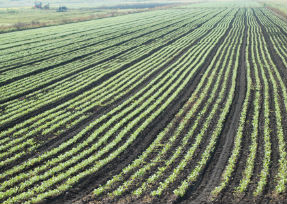Lighting:
Using T-8 fluorescent lighting for barns can reduce energy consumption. Lighting can be controlled by using dimmers and motion sensors to prevent light being used when it is not required.
Choosing the Right Equipment:
Matching the right tools and equipment in a farm is essential to achieve energy conservation and efficiencies. For example the size and power of a tractor should be matched with the size of the implements, machinery or equipment that it is towing.
Factors in choosing the right implements include what crops are being planned to be grown and the amount of acreage that it will cover. The types of tillage and cultivation tools required is another factor which determines equipment requirements. The width of the implement will determine the time it takes to till the field.
The power requirement of a tractor will be determined by the width and speed of the implements and the characteristics of the soil. Tractors are found to be more fuel efficient when they operate at higher capacity engine loads. Reduced throttle operation also helps in saving energy.
Maintaining Your Equipment:
Maintaining your equipment regularly helps to ensure that they are performing at their peak efficiency levels. Tractor tires should be kept well inflated and engines serviced on a regular basis. Ensure that equipment is switched off whenever not in use. Preventive maintenance will help to prolong the life of your equipment.
Maintaining Irrigation Systems:
In all irrigation piping, the number of bends and joints in the entire system needs to be reduced. A bend in a three inch diameter pipe contributes as much loss in pressure as an additional three meters of pipe would. Fewer bends and fittings in a network of pipes, lesser is the amount of fuel required to run pumps. Use irrigation systems during hours of darkness to minimize the evaporative effect of the sun. As far as possible use gravity supply water to eliminate the need for use of pumps.
Other Tips:
Use a vat wrap to insulate your milk storage container. This helps in insulating the container and can lead to energy savings of up to 21%. Using a heat recovery can reduce water heating costs by 56%.










